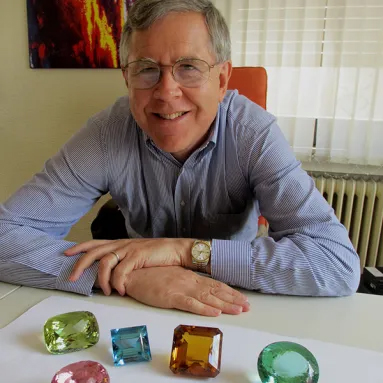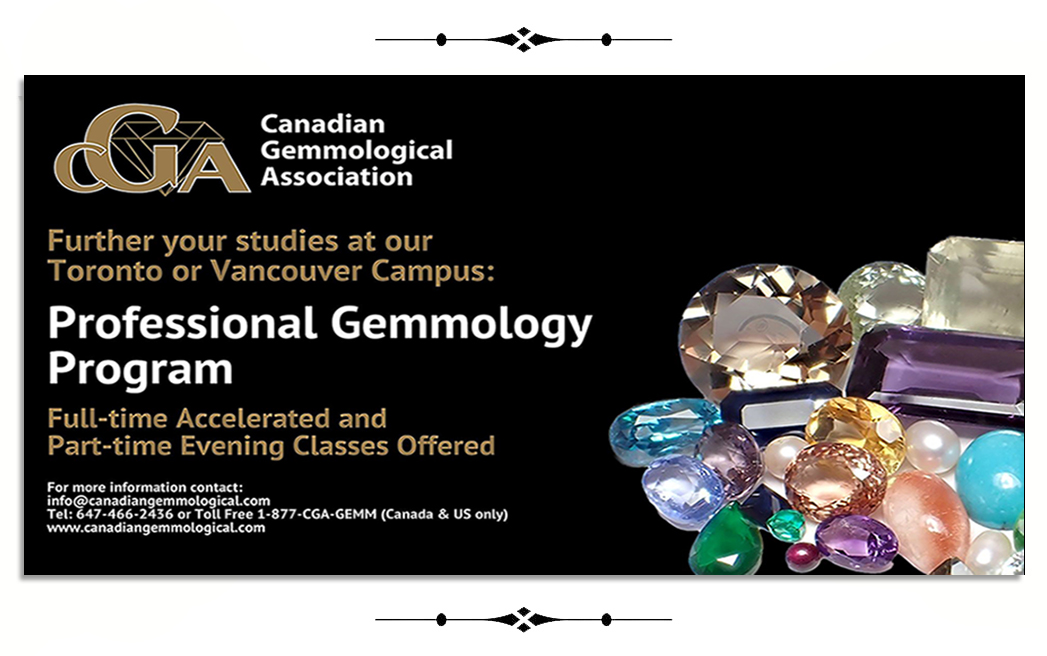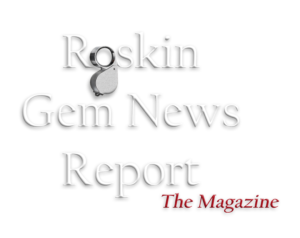Thank You & Congratulations on your retirement!
To-Do After Post-Doc at Harvard: Get a Job
It was the Fall of 1983 … Dr. Jeffrey Post was completing his post-doctoral work at Harvard when he saw a job opening at the Smithsonian; a research mineralogist. We could say, “and the rest is history,” but the history is what you want to know.
“It was a once in a lifetime opportunity,” said Post. “It was just too good an opportunity to pass up.” And it didn’t take long before he knew it was the right decision. From the moment he stepped into the Smithsonian, he was doing what he liked to do, and getting paid for it.
Climbing the Fast Ladder
It was just 5 years of research when he was then appointed to Department Chair. Things at the Smithsonian were changing rapidly. Within a year after the promotion, John White, the curator, left the Smithsonian for a chosen career change. Other senior members of the department had either moved to other departments, or had left, leaving Post, the mineralogist on staff, as the clear choice for curator. “The timing was either beautiful, or daunting, depending on how you looked at it,” said Post. Talks of redoing the gem & mineral galleries were already in the works. At the same time, the museum created a development office for fund raising, as the federal budget was not going to be enough to do the job that needed to be done.
Post recalls that the fund raising campaign included not only the gems & minerals exhibits, but also rocks and meteorites. But it was the gem & mineral donors list that helped fund most of the project.
Most Rewarding
The new hall opened in 1998, 8 years after becoming the curator. To this day, rebuilding the hall was one of the most rewarding experiences of his career.
“Working on the exhibit was certainly top of the list,” says Post. “It’s a unique museum experience. You are still doing research, but this was an opportunity to work on a project with all kinds of people that you would never ever connect with anywhere else. Designers, writers, educators, all working together to tell a story about gems, minerals, and geology.
“Put this out on a stage where millions of people are going to see it every year, and will be for decades. And by that time, who knows how many millions of people may see it? Where else do you get an opportunity like that? Plus, you have the world’s greatest collection to use to try to help tell that story.
“I was, and am, very fortunate working with all of those talented people.
“This was probably the hardest but most rewarding thing I’ve done.
Proud of the New Exhibit
“Everyone was excited and passionate about the project. And to this day, we are all still proud of the new exhibit.”
New … the exhibit opened in 1998. And it still looks new! Not only do they have an endowment for the exhibit, but the department team spends time making certain the exhibit stays clean and presentable, as it represents their work, their department.
“It is still one of the most visited Halls,” says Post. “The Hope Diamond of course brings a lot of people into the gallery, and the other gems too, of course. That is why we put the gems right up front.” This way, when people walk by the gallery, they want to go in.
“We learned a long time ago that if you put the words ‘Geology Exhibit’ outside the hall, not a lot of people come in on their own. But if you start out with ‘Hope Diamond and National Gem Collection,’ then everyone wants to come through the door. And then once they’re in, they continue the journey.”
Survey Says
“On occasion, we do public surveys when they come out of the museum,” says Post. “It’s not the Hope, or the gems, or the dinosaurs that excite them. It’s the minerals!”
Most people love seeing the gems. That’s what gets them in the door. “We remind them of the gem’s natural history … that gems are something people have done something to. They’ve cut and polished them. There’s artistry, there’s a history, there’s a culture involved. But then they walk into the mineral gallery. Once it sinks in, they realize that these things actually came out of the earth just as you see them! It’s an AHA moment!”
Post explains that the point of creating an exhibition is to get people to think, to change the way they feel or understand something. “If they’re not different going out than they were going in, then why create the exhibit?”
“There’s a whole different feeling once you see the minerals. The earth is a much more magical place than we imagine. These minerals are treasures of the earth.”
The beauty of the Smithsonian’s gem & mineral collection is not that it’s there just for research, but to also preserve earth’s great treasures. “Our national collection is going to be here forever.”
Stacks of Pyrite Cubes
“I love to stand out in the hall and watch people, especially families,” says Post. “One of the first minerals you see as you walk into the exhibit are these stacks of pyrite cubes from Spain. And then some big calcite, quartz, and wulfenite crystals. These things came out of the ground just like that!
“You walk up to people and tell them that this is how they came out of the ground, and they say ‘No Way!’ and suddenly it’s ‘Oh My Gosh!’ That’s the kind of memory that never goes away.”
“I am very proud of the fact that I think we have changed a lot of people in the last 25 years.”
Seeing minerals, the real thing, is an amazing experience. We all see pictures of gems and minerals, but it’s not the same as seeing the real thing in person, up close and personal.
“Wow – it’s real! It has a history, it has a story, it has a value … it’s beautiful! This is what makes museums a great destination. In fact, we have never been busier than we are today.”
Research
But don’t forget, Post is a research mineralogist.
“Having access to all of these objects is part of the perks of the job. Where else could you do research on the Hope Diamond? Or put the Hope Diamond next to the Wittelsbach-Graff diamond and spend the night doing research on them?
“We recently took the Oppenheimer Diamond off display for research. Having that opportunity is something you end up pinching yourself and asking, ‘where else could you do something like that?’”
Just for Fun
“When we had the Wittelsbach-Graff Diamond to go on display, we had an opportunity to examine it alongside the Hope Diamond. We had this group of people there to examine the two diamonds.” They were gathered in the Blue Room, next to the walk-in vault. But for security reasons, while Dr. Post went with the guards to go retrieve the Hope from the exhibit, the group had to leave the Blue Room and assemble in a conference room. This meant, that when Post returned with the Hope, he was the only one in the Blue Room.
“Once the public was gone, and the museum closed, we (myself, guards and security) pulled the Hope Diamond off exhibit and took it back to the Blue Room. I walked it into the gem vault, and there was this moment. I was all by myself with the Hope Diamond in my hand, and there, sitting in front of me, was the Wittelsbach-Graff. So, I indulged myself and put the Hope Diamond next to the Wittelsbach. I was the very first person to ever see these two diamonds next to each other. And then, I turned off the light, turned on the Ultraviolet lamp, [and then turned it off] just to see how they looked with their phosphorescence. Lo and behold, there they were, both glowing red, and looking exactly the same! Where else do you get to do that?”
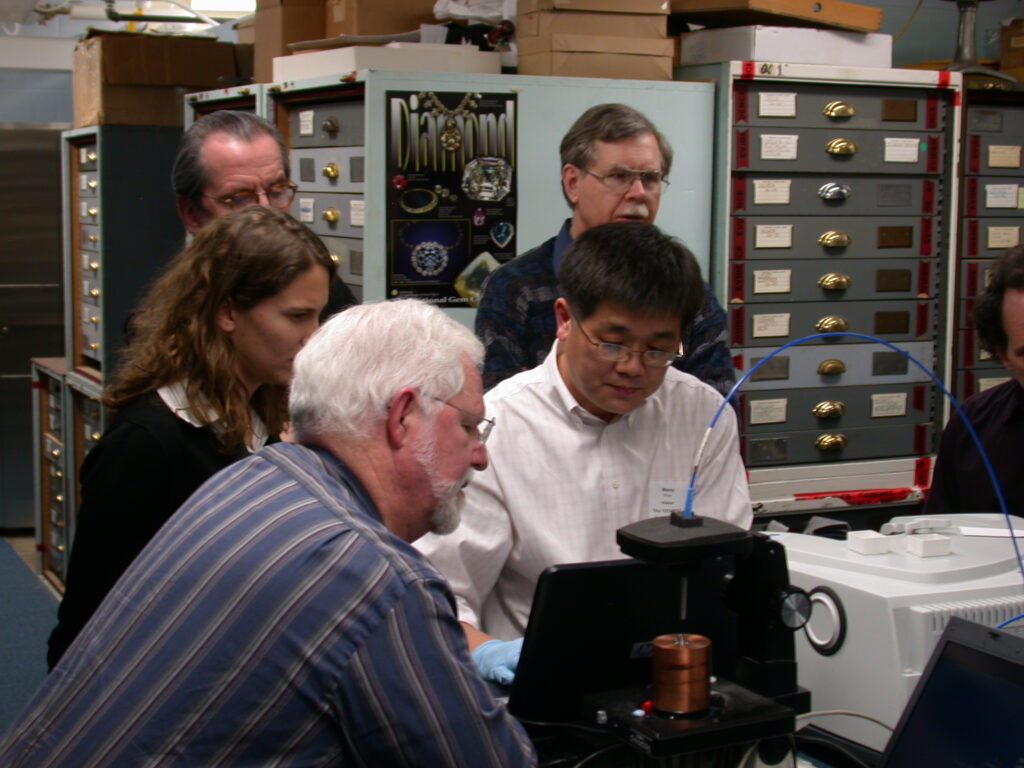
Numerous Exhibitions
During his tenure, Post developed several notable exhibitions, including, in 2003, The Splendor of Diamonds. On display were the De Beers Millennium Star (203.04 carats), 6th-largest colorless diamond, an unnamed (103 carats) colorless, cushion-cut, the Allnatt (101.29 carats), a yellow diamond, the Steinmetz Pink (59.60 carats), the largest pink diamond, the Heart of Eternity (27.64 carats), a blue diamond, the Pumpkin Diamond (5.54 carats), one of the largest orange diamonds, the Ocean Dream (5.51 carats), the largest blue-green diamond, and the Moussaieff Red (5.11 carats), the largest red diamond.
“We had the Dresden green diamond at the Smithsonian, and we could hold it, and study it, and then have it on display in the gallery alongside the Hope! When will that ever happen again?”
In 2005, it was The Allure of Pearls.
On display in the gallery were 12 extraordinary pearls! This included the Hope Pearl, previously owned by Lord Henry Philip Hope, who gave his name to the Hope Diamond, La Peregrina, one of the largest pearls in the world, found in the 16th century off the coast of Panama and [at the time] currently owned by Elizabeth Taylor, the Drexel Pearl, a large natural grey pearl from Polynesia in a Cartier setting from 1905, the Black Beauty, an eggplant-colored natural black pearl from South America, the Pearl of Kuwait, a natural drop pearl from the Persian Gulf, the Queen Mary Brooch featuring two large natural pink conch pearls in a 100-year-old setting, the South Sea Drops, two rare natural South Sea pearls, the Survival Pearl, reputed to be the world’s largest pink snail pearl, a fresh water pearl found in the United States, the Pearl of Asia, reputed to be the largest natural pearl in the world and once owned by Shah Jahan (builder of the Taj Mahal), and the Paspaley Pearl, one of the largest cultured pearls in the world, on public display for the first time.
“That summer I really got to appreciate pearls.”
In 2009, along with the Wittelsbach-Graff, it was the Celebration of the 50th Anniversary of the Hope Diamond.
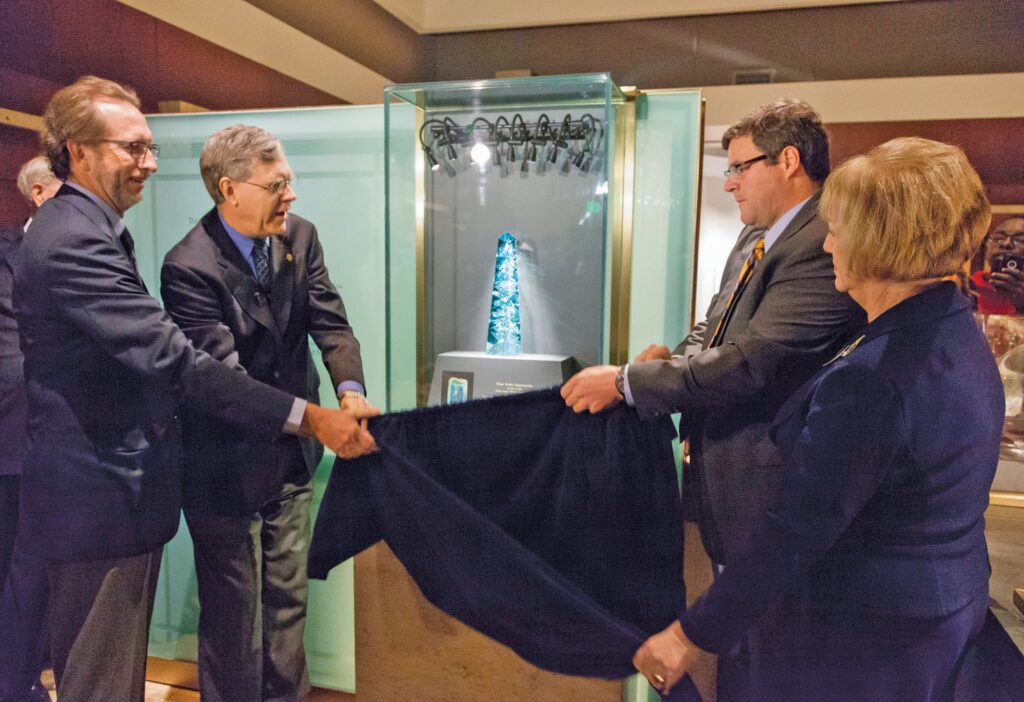
In 2012, Post put on permanent display, the Dom Pedro Aquamarine, the largest single piece of cut-gem aquamarine in the world, designed by world-renowned gem artist Bernd Munsteiner, standing 14 inches tall, and measuring 4 inches across the base. Dom Pedro weighs in at 10,363 carats, or 4.6 pounds.
Gem & Mineral People
“Many of the people I have met who are in the gem business have this true love for the objects. It is something they will not sell, that will be passed down in the family [or maybe donated to the Smithsonian for everyone to enjoy].
“We all share that special appreciation for the beauty of the gem or mineral. The privilege to meet these people, see the stones, and hear the stories has been one of the best parts of my job.”
Passing the Torch
And now, Dr. Jeffrey Post is passing the job on to the next curators.
“I feel really good about the future of the whole department as well as the collection,” says Post. “In the last couple of years, we’ve made a couple of hires; Gabriela Farfan, and Ioan Lascu, who will both share the position as curator of gems & minerals.
This position was never intended to be a one person job. Even though Post has singularly handled the job, the goal has always been to have two people in the position. And with a recent new endowment, this will now become a reality.
For Post, now passing the torch, it allows him more flexibility in the areas of interest. He’s had the opportunity to do research on items with gems and minerals in the collection. But his main interest has always been environmental mineralogy, working on things like manganese oxides, clay minerals, iron oxides… the kinds of minerals found in soils, and sediments. Or as he describes it, “you pick up a handful of muck from the bottom of a lake, and ask ‘what’s in there?’ ‘What are those minerals? How do they affect the chemistry of the water, plants and animals that interact with those soils?’”
Quite the 180 degree turn from a 100+ carat Tsavorite cut by one of the world’s best gem artists, but this has been Post’s long term research interest… fine grained, poorly crystalline materials that make up soils and mud.
We are SO glad that he postponed his love for mud these past 39 years!
Congratulations, and Thank You… from all of us!
National Museum of Natural History
https://naturalhistory.si.edu/staff/jeffrey-post
Mineralogist and Curator-in-Charge of Gems and Minerals
Dr. Jeffrey Post retired and will carry on as a Research Associate Emeritus.
Department / Division
Mineral Sciences
Education
B.S., University of Wisconsin, Platteville
Ph.D., Arizona State University
Research Interests
Environmental mineralogy; single crystal and powder X-ray diffraction; electron microscopy;
manganese oxide minerals; clay minerals; computer modeling of mineral structures,
rietveld analysis (x-ray diffraction); gemology.
Jeffrey Post has his doctorate degree in Geochemisty.
His life’s ambition upon graduating was to work at the university level, doing research in environmental mineralogy, and teaching.



